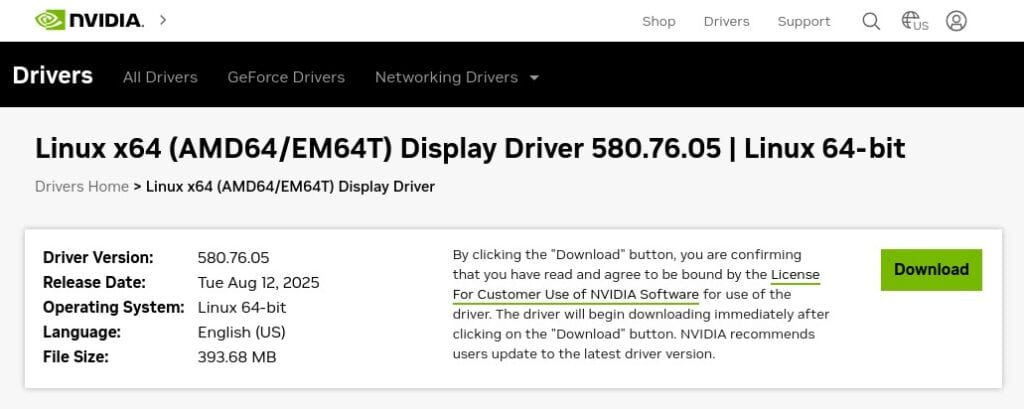After debuting in beta early this month, NVIDIA has rolled out its newest stable Linux display driver update, version 580.76. It is already available for download and is recommended for users seeking the latest improvements for their graphics hardware.
One of the headline additions is a new “OutputBitsPerComponent” MetaMode attribute, letting users manually control the number of bits per color component sent over a display connector. While the driver will still auto-select an optimal format by default, this extra flexibility will be beneficial for those fine-tuning image quality for professional work or high-end displays.
On the protocol side, egl-x11 has been updated to version 1.0.3 and egl-wayland to 1.1.20, further smoothing the experience for modern compositors. Wayland users also get expanded Vulkan support with the newly added fifo-v1 protocol, improving frame scheduling for apps that rely on Vulkan rendering.
Many of the fixes tackle long-standing quirks and potential crash scenarios. Vulkan applications should now be safer to run after lost device events, GTK 4 apps are less likely to crash on Wayland, and llama.cpp users on the Vulkan backend should no longer see intermittent crashes on exit.
There’s also a fix for a black screen issue on certain HDMI configurations, and one for blank or frozen displays when using Maxwell or Pascal GPUs with multiple monitors of different resolutions under specific DRM modesetting conditions.

For performance, NVIDIA has enabled RMIntrLockingMode by default—a feature first introduced in the R570 series that can reduce stutter, especially in VR. There’s also an experimental setting to reduce latency from display interrupts, though it’s off by default and requires a kernel module parameter to activate.
Other changes include better clock speed reporting across nvidia-settings, NVML, and nvidia-smi, fixes for VR headset compatibility, and memory leak resolutions for OpenGL and Vulkan apps after suspend/resume cycles. A variety of stability fixes for PRIME Display Offload, GLX rendering on Xwayland, and even 32-bit x86 apps on modern glibc are also bundled in.
For a complete list of changes and downloads, visit the release notes.
